At our 6th Auction – coins of the Waza and Sobieski
We have prepared 2 posts for today. We have a lot to show, and the days to the auction are less and less, so now we will present the coins of Jan II Kazimierz and Jan III Sobieski, and after the evening of Zygmunt III Vasa.
The first item is a ducat from the slightly rarer year 1661 from the mint in Gdańsk, with a very nice detail and gloss. It is worth paying attention to the preserved crown or locks of hair, which are evidence of a low-circulation condition. On the coin’s surface, we can also notice small cuts, which were more often bruised and scratched due to the fact that gold is a soft and plastic metal. In his catalog, Dutkowski made R5 a rarity.
The next coin is extremely interesting, due to the fact that the ortas are most often assigned to coins with a value of 18 groszy, while the specimen we want to show is an issue worth 21 groszy.
The 21-grosz issue was issued under the universal of January 14, 1651, canceled a month later on February 24.
Due to the shortness of the beating, this emission today belongs to one of the rarest orts of Jan Kazimierz, regardless of the variety. It is also highly appreciated by the creators of catalogs (Kopicki R4, Kamiński-Kurpiewski R5), and also valued very high by Tyszkiewicz, at 24 marks, where Gdańsk thalers of this ruler in popular varieties were priced at 7 marks.
The specimen that we will offer you on November 22 is circumstantial, with a beautiful, age-old patina, underneath which a mint shine.
There will also be a sixth, unspecified in the literature, from the mint in Poznań from 1661 from the Poznań mint in its state of preservation.
The first year of Poznań sixes of Jan Kazimierz with the characteristic bust and initials of Mikołaj Gilli – the manager of the Poznań Mint on the reverse in the variant with an offset in the reverse legend, where R is pierced with P in POL.
We also have a very rare coin for the collectors of półtorak. Once a coin attributed to Poznań, now the mint in Kraków was minted in 1659. Variation with MONETA and POLON in the reverse legend.
Górecki rated the coin at F4 (a coin almost unavailable for trade, very rare, sometimes even unique), and Niczytajło-Zamiechowskij rated the coin at R7!
The offer will also include the Elbląg ort from 1661, slightly damaged, but a circumferential specimen with a nice patina and gloss, and a sixth from 1666 from the mint in Vilnius, a variety with the IOA CASI legend with a perfectly preserved gloss.
Moving on to the great coins of Jan III Sobieski, at the start we want to show the mint orth from 1677, where the bust of Jan III Sobieski is depicted in a laurel wreath, armor with 5 stripes, a cloak fastened with a jewel, with an order cross on the chest. A variant with a slightly curved coat of arms and the initials of Santi de Urbani Bani under the face value. An excellent, selected specimen in a state of preservation practically unheard of for this ruler’s ortas.
The offer of slightly rarer denominations also includes the Kraków triple from 1685 in mint condition. The coin is struck with a slightly worn obverse stamp. A rare coin, available in highly circulating states in auction archives. Known from a few copies, additionally in our grading NGC MS61 (MAX). A coin that can decorate both collectors of Jan III Sobieski’s coins and Polish triplets.
Sobieski’s Szóstaki is a topic that has gained great interest, which can be seen from the recent quotations on the Onebid platform. We are pleased to offer you a group of selected, specimen types of copies that can be a decoration of many collections. The coinage of this king is characterized by great neglect both in the preparation of the disc and the quality of the minting. Numerous metal defects, defects or flaws of the metal sheet often make the coin not aesthetic despite its mint condition. The copies that we are pleased to offer are additionally selected in terms of maintaining good quality sheet metal and minting. The decoration is definitely a Kraków six from 1680 with an erroneously stamped face value in the form of the Roman number IV instead of VI. Interestingly and worth noting, the emission is always beaten with punches rotated in the axis by 6 h, which makes them so-called reverse. This technique is unusual for the Polish coinage of that period, but the repetition of this axis when issuing the wrong denomination leads to the hypothesis that the Krakow workshop at that time used the markings / locks for attaching the stamps in a given system. This specimen is an excellent example of what Sobieski’s sixes could have looked like if it had been given more attention in minting techniques. Perfectly preserved wreath, locks of hair, armor with an armlet, and even a fantastic background! But the reverse deserves special attention here, where on the eagle we can see detailed elements of the eagle with feathers on the body. The coin was appreciated with the MS65 + note, which is extremely rare not only for the coins of Royal Poland, but especially for Sobieski’s coins. Szóstaki in the videos, where the phenomenal gloss is shown and the presentation of the coin from different perspectives, can be seen here:
https://www.youtube.com/watch…
And here:
https://www.youtube.com/watch…
A rare variation in the mint condition is the six from 1682 with a bust along the line from the Kraków mint. A characteristic Krakow issue with a royal bust in a crown and a mantle on a half-line. The obverse is stamped with a slightly cracked stamp. The royal bust is depicted in a four-bowed crown with five fleurons, with 9 jewels in the hoop, armor with 3 bumps and a mascaron on the breastplate, with visible 4-armor sleeve plates with bumps in a 3-3-2-1 pattern and a cloak fastened with a jewel, on a half-rim linear. A coin that is missing from many collections, even in poor condition, at our NGC grading auction on MS61.
The second characteristic Krakow issue is a six-piece with a royal bust in a crown and a mantle. A model with a nice, delicate patina and a phenomenal mint gloss. It is also worth paying attention to the sixth from 1684, appreciated by the MS62 note, where the starting price was at the level of PLN 500, and the pre-auction currently already amounts to PLN 3300, making it one of the most expensive sixths of Sobieski in Polish auction history.
For more, please visit www.rda.onebid.pl


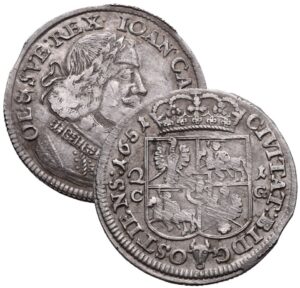
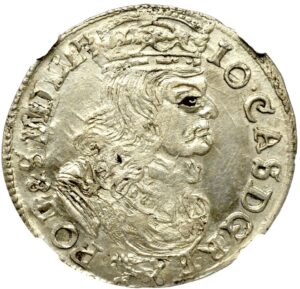
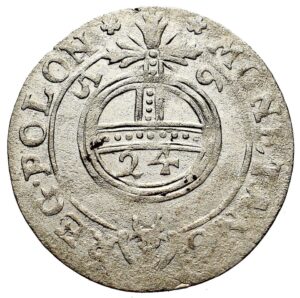
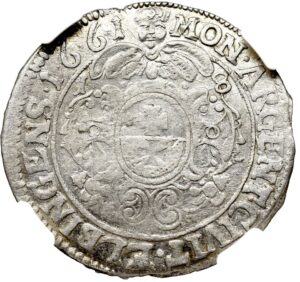


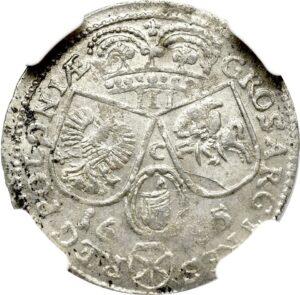
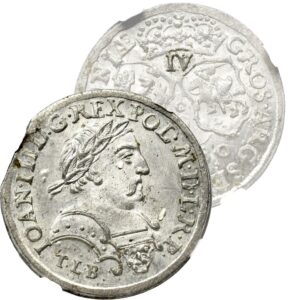
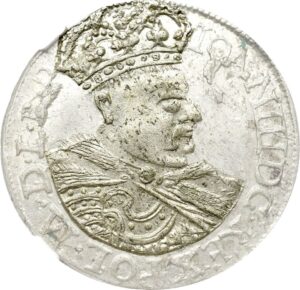
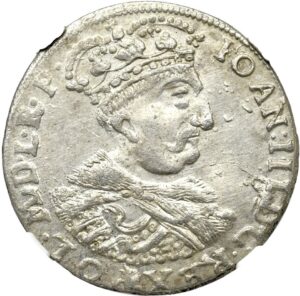
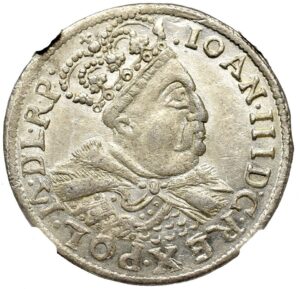
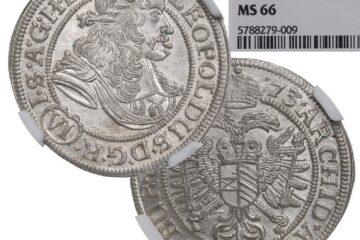
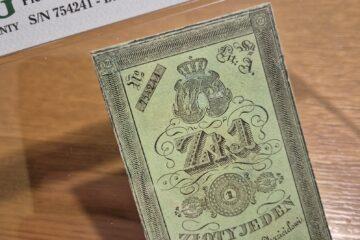
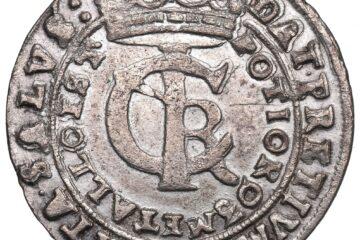
0 Comments